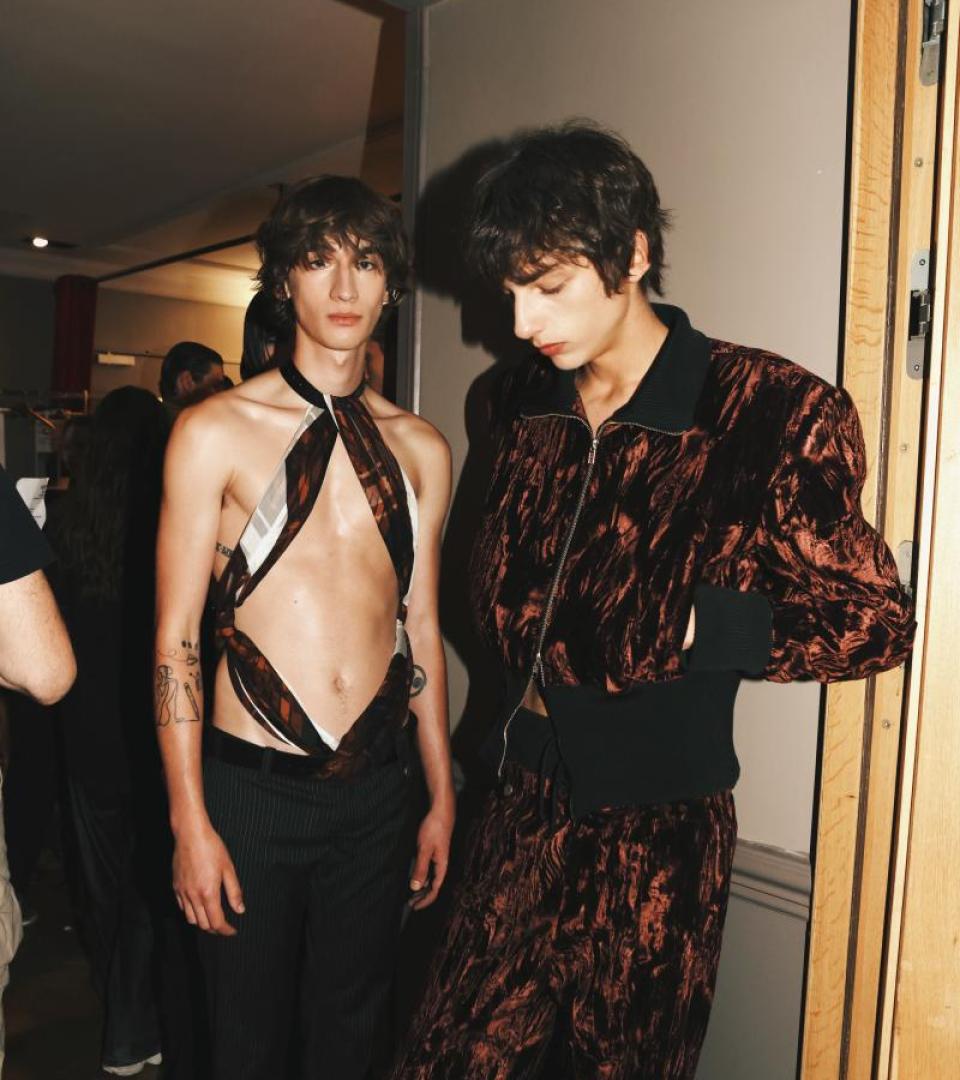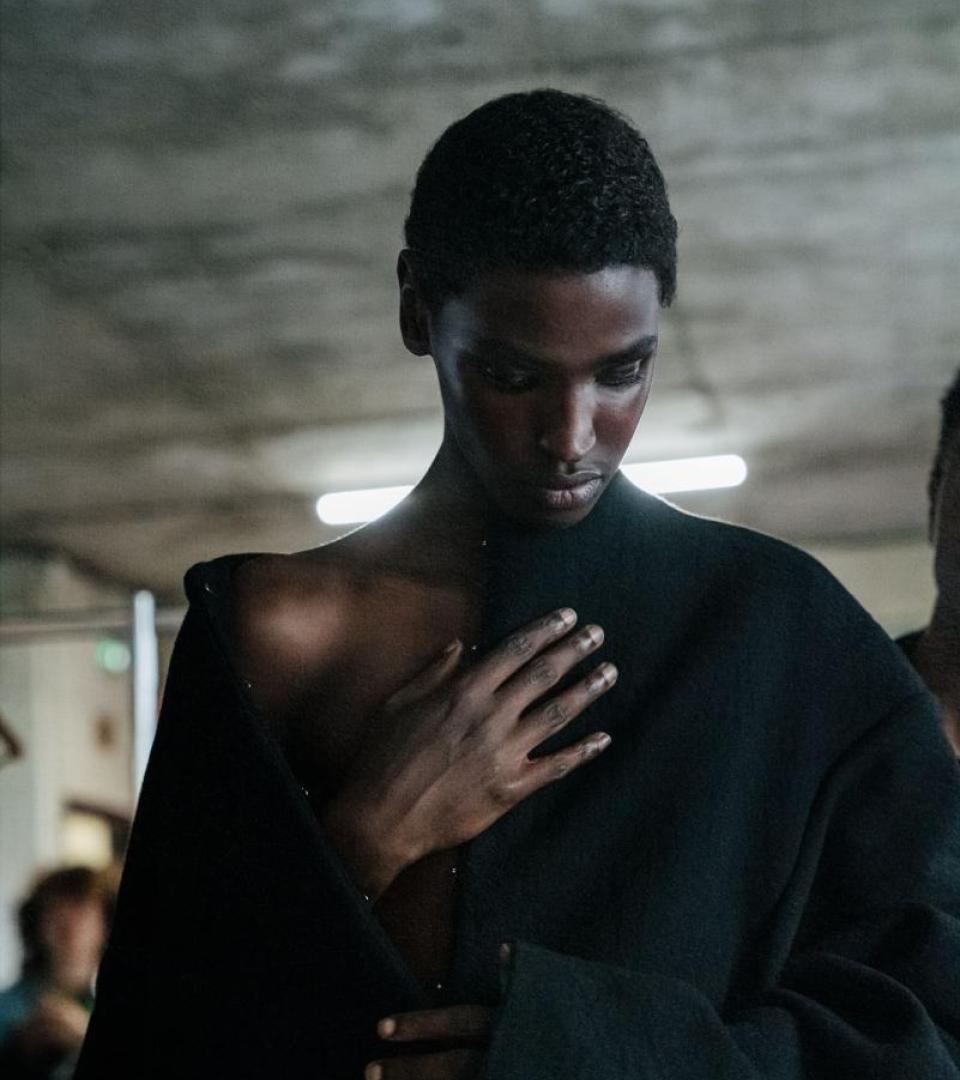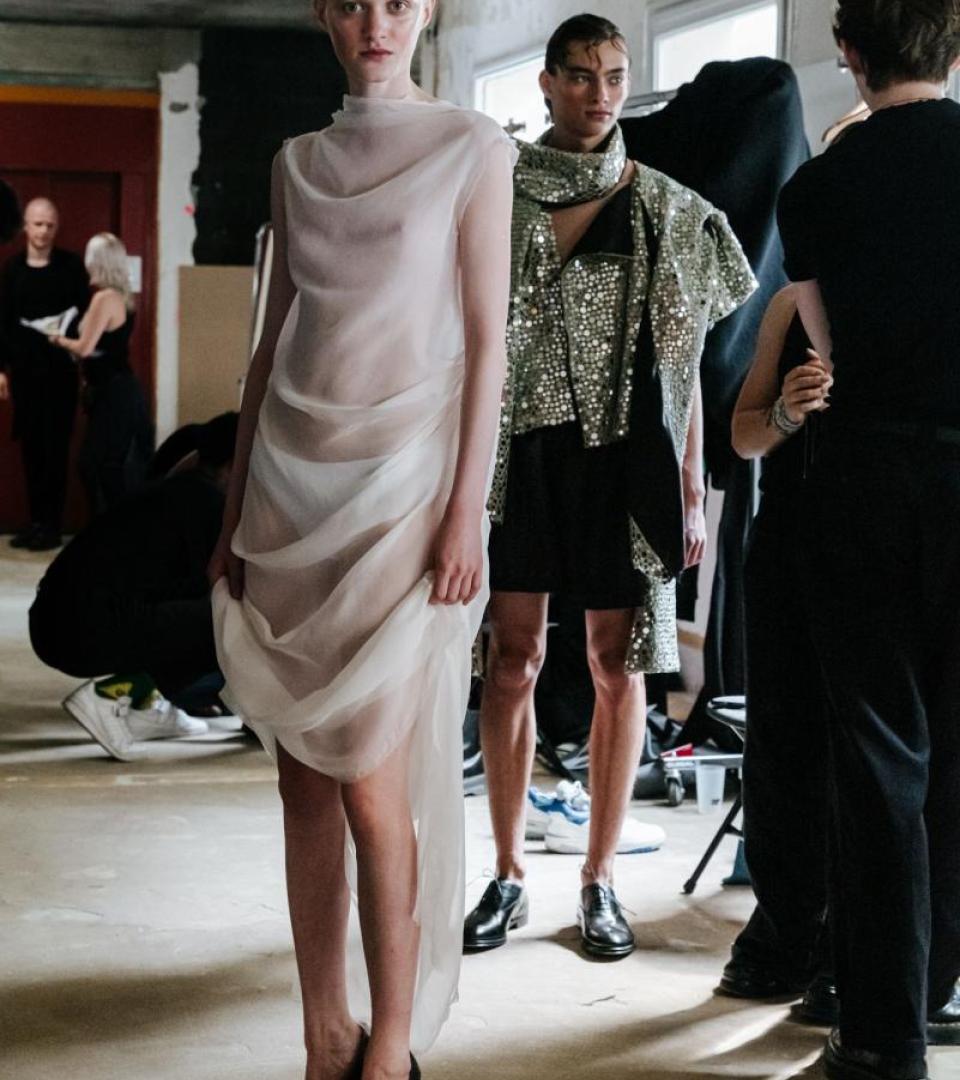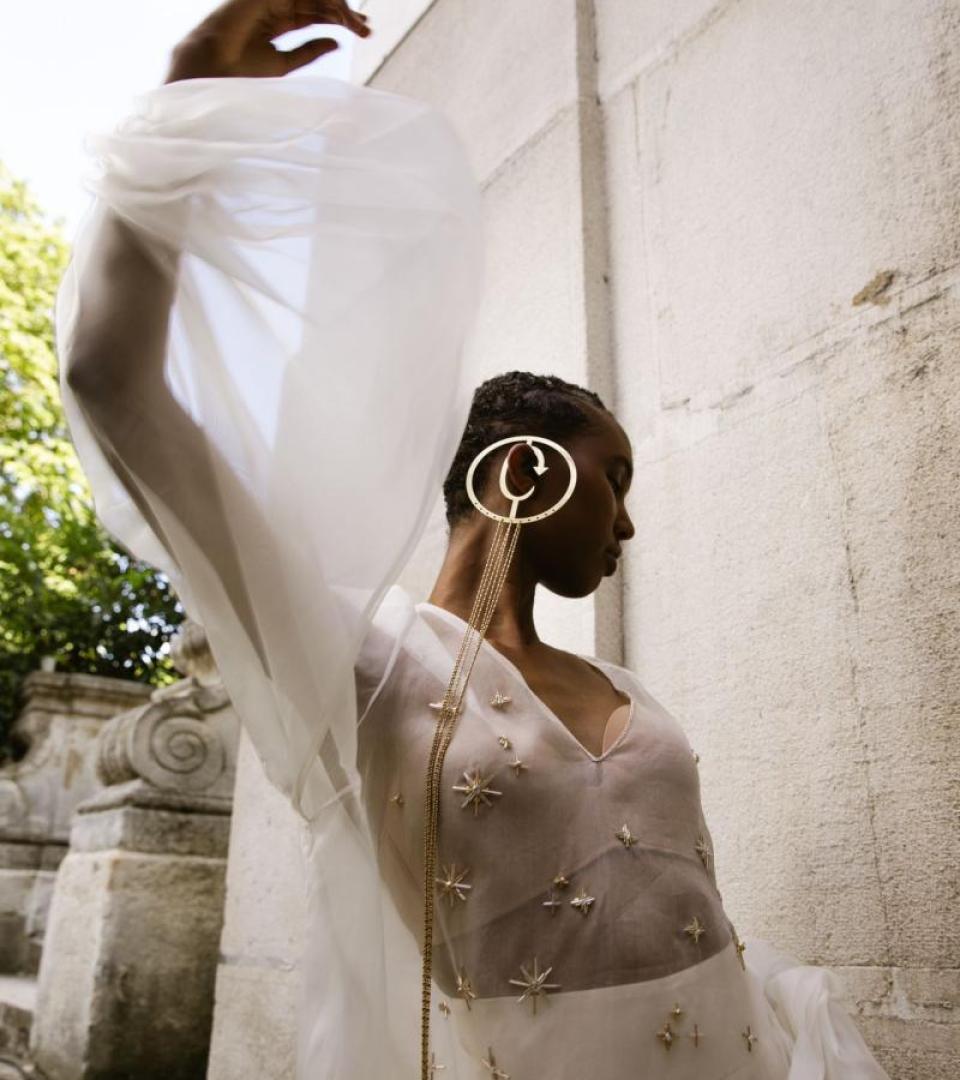/gal-le-rì-a/, an Exploration of Crafts, Art and Nature
From January 28th, the Palazzo Farnese, headquarters of the French Embassy in Rome, will unveil from the project “/gal-le-rì-a/” imagined by the artist Sylvio Giardina. The performance will connect contemporary art and craftsmanship. The curator Alessio de Navasques, founder and creative director of A.I. Artisanal Intelligence, talks about this project that celebrates crafts, art and nature.
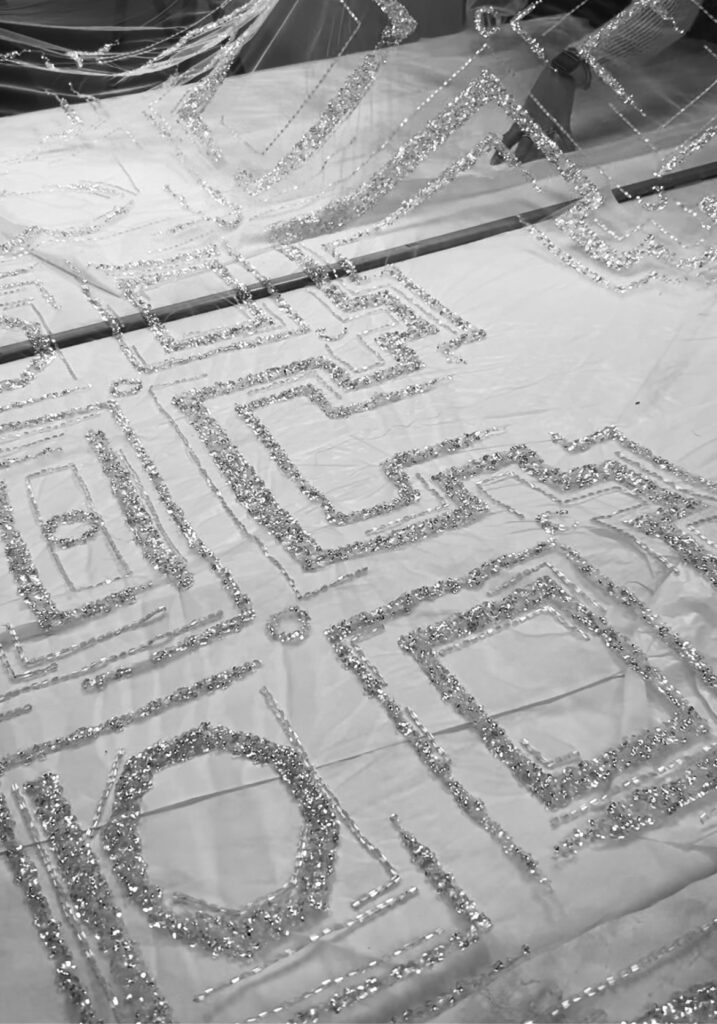
/gal-le-rì-a/ aims to celebrate crafts. Tell us about this creative project?
The idea stems from a reflection on the meditative dimension of craft making, particularly the concentration of embroidery, as an ancestral and mythological gesture that is lost in the mists of time. The ability to write one’s history on fabric also represents a political and identity tool. Consider the importance of the Bayeux tapestry. Together with Sylvio Giardina – celebrating his 10 years of research in fashion between crafts and contemporary art – we thought that this timeless gesture could guide the visitor in a cathartic process, a sort of ritual through the halls of the main floor of the Farnese Palace. Thus a unique project took shape, uniting Italy and France in the name of high craftsmanship. The French ambassador in Italy, Christian Masset, agreed to host a path that weaves myth, nature and rebirth, tracing the spaces of the palace in a dialogue between fashion, contemporary art, and the métiers d’art.
The performance will be hosted at Palazzo Farnese in Rome. To what extent has the space inspired you in imagining this project?
Galleria is a word instantly evoking that marvellous passage through the collections, that place where an artist is born or represented. In its decomposition, each syllable becomes a point of the embroidery, traces the phase of an alchemical reaction – of the sublimation of a metamorphosis process which, in the architecture of a symbolic building of the Renaissance, transforms culture into nature. The story is entrusted to the hand of the craftsman, a witness of those Renaissance values of know-how, of perfection, of the work done by man and ofhis ability to pass it on to others, founding ideals for the very definition of Italian fashion. In the Ercole Farnese hall, Michelangelo’s mystical geometries inspire a story that crystallises the atmosphere. Precious drops trap the secrets of Platonic solids and golden proportions on the tulle. The ceiling is reflected in a large loom suspended like a spider’s web, where time slows down in the rhythm of the gestures of the two embroiderers. Point after point, the cosmogonies of the infinite are translated into drops of water. With its perfect proportions, Palazzo Farnese is an expression of the intellect as the centre of the universe in the humanist vision.
In your opinion, what is the relationship between nature and crafts?
Craftmanship is a natural dimension of human making. Approaching natural and non-natural materials – with the possibility of creating something with one’s hands – is a gesture that even in tribal cultures has a strong creative and identity value. Handicraft techniques involve respecting natural materials and their timing, and the evaluation of quantities and efforts according to human capacity. It is an activity that we could call sustainable and, if done in the right way, it is respectful of nature.
There is the idea of wonders, of mythology and nature. What are the interactions between these fields?
In this project, the natural dimension is evoked by landscape painting, by atmospheric perspectives, rarefactions and pictorial glazes. The itinerary created by Sylvio Giardina ends in the gallery fresco by Annibale Carracci where Ariadne’s thread intertwines nature and culture in the dimension of myth, where decoration opens up and anticipates the amazement of baroque backgrounds. There, where the scene of the Triumph of Ariadne and Bacchus shines in the vault, eight embroiderers symbolically create their wedding cloth, an embroidery made ofseeds and gold threads. Fragrant rhizomes and natural elements invade frames and geometries, breaking the perfect harmonies to give a new order to things.
This interview has been lightly edited for length and clarity.
